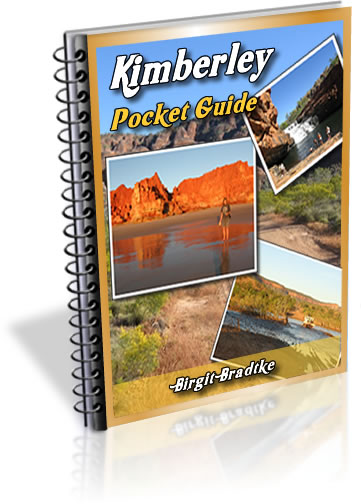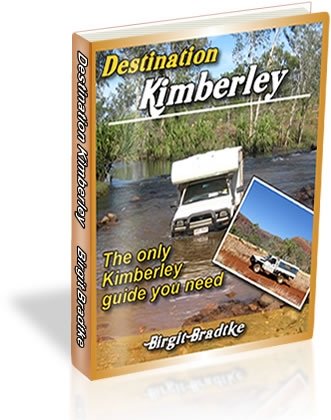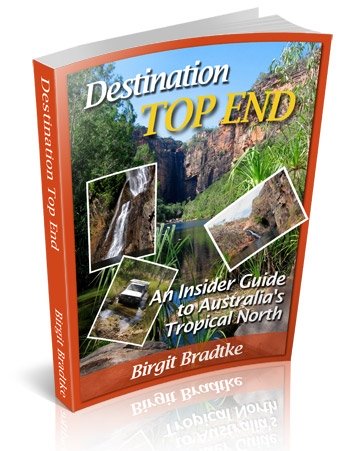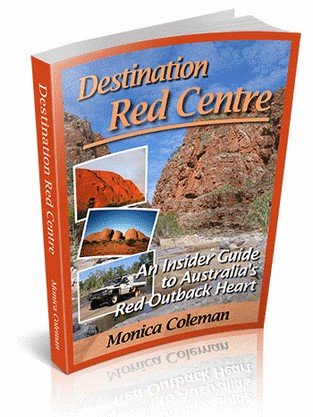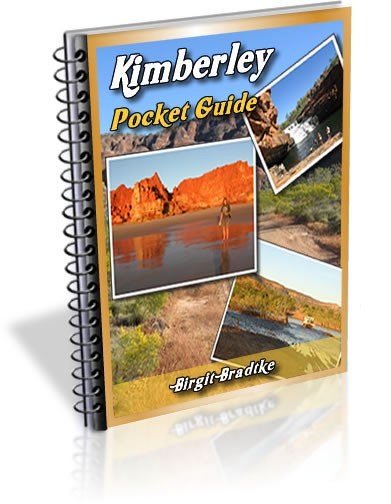Kalumburu
by Charles
(UK)
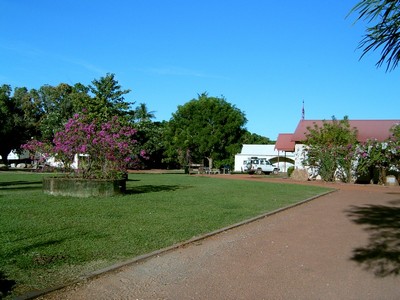
Kalumburu
Kalumburu is the cultural centre of the Kimberleys – something you wouldn't know unless you stopped to look.
You might think it would be the Mowanjum Arts Centre at the start of the Gibb River Road, a not-to-be-missed feast of Wanjinas and other contemporary aboriginal art in a modern wanjina-shaped building where if you're lucky, you might, like us, pass the time of day with Donny Woolagoodja, the director, who designed the Wanjina for the opening ceremony of the Sydney Olympics. (Wanjina is pronounced with the emphasis on the first syllable).
And if you read Donny's book, Keeping the Wanjinas Fresh, you find there are some parallels with the Kalumburu story in terms of the positive effects of some missionaries in helping aboriginal people to live with confidence in a white man's world.
Most tourists use Kalumburu (emphasis on the second syllable) as a staging post for getting supplies and for fishing on the coast (best in a boat) or as a base for exploring further north. (There seems to be a competition between McGowan's and Honeymoon Bay – we heard a few negative reports about the latter). So people don't look too deeply into what's in Kalumburu itself. But if you spend some time at the mission, a great story begins to unfold.
Unfortunately 2008 is the last year of Father Anscar's highly entertaining and informative half hour tours that tend to go on for a couple of hours. He leaves April 2009. The extraordinary collection of aboriginal artifacts and gifts from all over the world that he has put together in the museum will be fully catalogued by then and hopefully a new guide will be able to step into his shoes. The exhibition is designed to show that aboriginal culture can stand tall alongside the cultures of the world.
2008 is the hundredth anniversary of the founding of the mission at Pago, a little further north: it moved to Kalumburu in the 1930s because there was a more reliable water supply. There were to be big celebrations on August 15th to mark the occasion.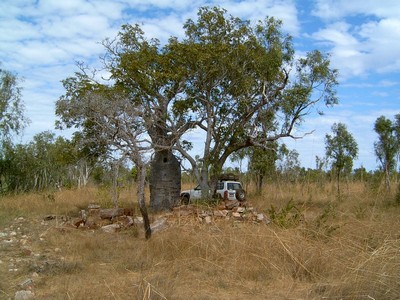
Getting to Pago is an adventure on the road and a mystery at the other end. Where the road turns a very sandy corner to the left, there's an oil drum on the right that marks a side track that takes you to some ruins by a boab tree. It has August 15th 1926 carved on it – an earlier anniversary. The ruins are the ruins of the pigsty! Apparently there are posts and the bread oven to be found nearby but we didn't know what we were looking for.
Don't bother to drive any further on this track, there's a fallen tree blocking it. The road on to the shore takes you past the house of the Waina family – they were friendly and helpful. Not much to see on the shore.
There is an interesting booklet that gives you the outline history of the mission, available from the mission office or takeaway. It's also worth reading the biography of Father Sanz, an extraordinary man who turned the mission into a self-sufficient farm providing work, purpose and health for the aboriginal community after the war.
When his work was destroyed by changes in government policy in the seventies, he retired back to his monastery in New Norcia, but returned to Kalumburu for a few years to die – which he did in June 2008, just before we arrived. There is a fascinating controversy over different approaches to helping the aboriginal community. (Memoirs of a Spanish Missionary Monk – obtainable at the Kimberley Bookshop in Broome).
Currently you'll find the army at Kalumburu, putting tarmac on the airfield, rebuilding the health centre and paying for the sealing of the road out to the beautiful beach at Marra Garra that's used for supplies. More politics at work!
Nowadays the Mission is supported by volunteers who come and stay for a few months. It's the end of an era and the beginning of a new one. If you take your time, you can't help but be touched by the peace of the place.
We were looking for a painting to take home and liked the Bradshaw style ones by the Waina family. Lily Waina's paintings sell for a fortune. Eventually we picked up a modest sized one by one of her granddaughters at the Mowanjum Arts Centre on our way out. She'd painted it there the day before!
Comments for Kalumburu
|
||
|
||
|
||
|
||
|
||
|
||
|
||
|
||
|
||
|
||
|
||
|
||
|
||
|
||
|
||
|
||
|
||
|
||
|
||
|
||
|
||
|
||
|
||
|
||
|
||
|
||
|
||
|
||
|
||
|
||
|
||
|
||
|
||
|
||
|
||
|
||
|
||
|
||
|
||
|
||
|
||
|
||
|
||
|
||
|
||
|
||
|
||
|
||
|
||
|
||
|
||
|
||
Travelling to the Kimberley?
The FREE Kimberley Pocket Guide
A great introduction to travel in the Kimberley region and along the Gibb. This free resource will answer all the questions you might have in the early stages of planning a trip.
Destination Kimberley
The full Kimberley travel guide shows you how to make the most of your adventure at Australia's last frontier. Destination Kimberley includes the most detailed and most current guide to the Gibb River Road available anywhere. Also called "The Bible" by its readers.
Travelling to the Northern Territory?
Destination Top End offers the same comprehensive, detailed insider information for the tropical regions of the Northern Territory. Be the best informed traveller in the Kakadu, Litchfield and Katherine Gorge national parks and beyond!
A must have if you travel to or from Darwin.
NEW! Destination Red Centre is the latest addition in this popular series. Monica Coleman takes you through Australia's red Outback heart, offering all the detail and insider tips that you have come to know and love about our guides. With special emphasis on Aboriginal communities and culture.
A must have if you travel to or from Alice Springs/Uluru.
